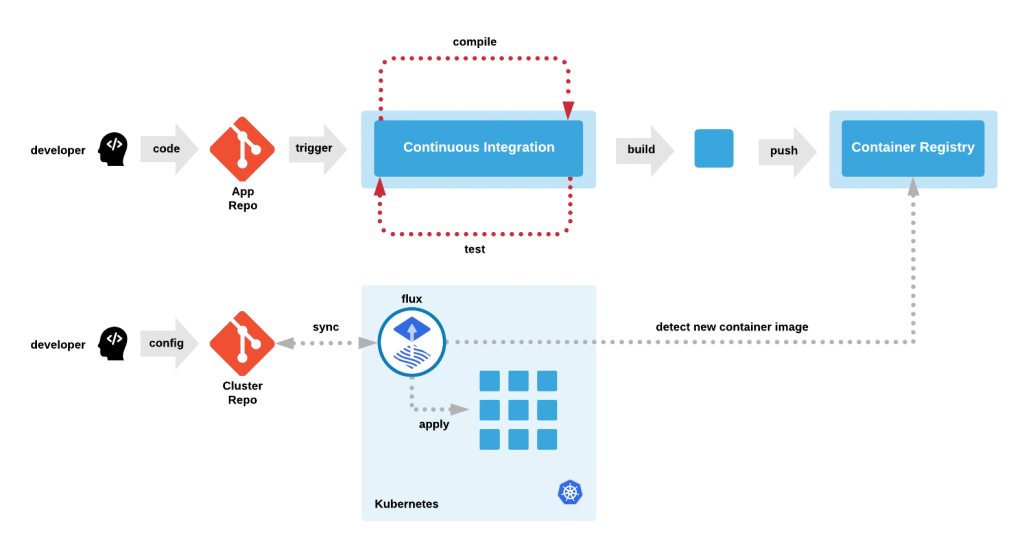
Hey there! Are you curious about what GitOps architecture is? Well, you’ve come to the right place! In this blog post, we’ll take a deep dive into GitOps architecture and explore all the ins and outs of this fascinating topic.
Introduction
GitOps architecture is a new and innovative way of managing software applications. It’s based on the principles of DevOps and uses Git as the central source of truth for all application configurations and changes.
In this approach, the entire application infrastructure is managed using Git repositories. Changes made to the application are pushed to the Git repository, and the changes are automatically reflected in the production environment.
How GitOps architecture works
GitOps architecture works by creating a declarative model of the desired state of the application. This model is stored in a Git repository and is used to manage the entire application infrastructure.
The desired state of the application is defined using tools like Kubernetes, Helm, and Terraform. These tools are used to create a YAML file that describes the desired state of the application.
Once the YAML file is created, it’s committed to the Git repository. The Git repository is then configured to automatically deploy the changes to the production environment.
Benefits of GitOps architecture
GitOps architecture offers several benefits over traditional approaches to application development and deployment. Here are some of the key benefits:

Increased consistency
By using Git as the central source of truth, GitOps architecture ensures that all changes are consistent across all environments. This reduces the risk of configuration drift and makes it easier to maintain the application over time.
Improved collaboration
GitOps architecture encourages collaboration between developers, operations teams, and other stakeholders. By using Git as the central source of truth, everyone has access to the same information, which leads to better communication and collaboration.
Increased visibility
GitOps architecture provides real-time visibility into the state of the application. This makes it easier to identify and resolve issues before they become critical.
Improved security
GitOps architecture provides a secure way to manage application configurations and changes. By using Git as the central source of truth, it’s possible to implement access controls and audit trails to ensure that only authorized users can make changes to the application.
Conclusion
In conclusion, GitOps architecture is a new and innovative way of managing software applications. It’s based on the principles of DevOps and uses Git as the central source of truth for all application configurations and changes.
By using GitOps architecture, organizations can increase consistency, improve collaboration, increase visibility, and improve security. So if you’re looking for a new approach to application development and deployment, GitOps architecture may be just what you need!
Thanks for reading, and happy coding!
Email- contact@devopsschool.com

 Starting: 1st of Every Month
Starting: 1st of Every Month  +91 8409492687
+91 8409492687  Contact@DevOpsSchool.com
Contact@DevOpsSchool.com
